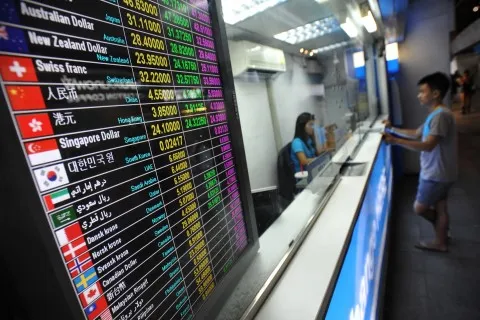
Is Asian debt helpless before a strong US dollar?
Amid increase in corporate Asia's FX debt.
It has been noted that a strong USD shouldn't be a cause for fear, in line with concerns over increases in corporate Asia's FX debt.
According to a research note from Morgan Stanley Research, corporate Asia’s FX debt has trebled in notional terms since 2008, causing concerns about credit vulnerabilities if the USD strengthens.
A detailed micro analysis of how corporates borrow, however, suggests net exposures are relatively low and FX liabilities are broadly matched by FX earnings.
Here's more from Morgan Stanley Research:
Credit risks related to FX volatility is not just about where and how much corporates borrow but whether their liabilities are matched by earnings. In this note we present a study of 762 large cap non-financial corporates across Asia-Pac ex-Japan to illustrate how corporates borrow, what drives their decision to borrow in foreign currency and whether it increases, or even reduces, risk.
Don’t fear a strong USD. This micro analysis suggests that aggregate vulnerabilities from a strong USD are relatively low. Reducing funding costs has clearly been one incentive for FX borrowing, but in doing so corporate Asia is broadly matching FX earnings with FX liabilities and has also been able to term out debt maturity profiles.
Where are the potential vulnerabilities? Exposures exist. FX volatility creates risks when two conditions are met: a corporate is both highly leveraged in absolute terms and relies disproportionately on FX funding. In Asia those most exposed are China Property, China Materials, Greater China Utilities and India Utilities.
Can banks fill the void if access to global funding gets tighter? This will likely drive up real deposit rates, given the pressure on domestic liquidity at local banks. Those with strong liquidity/improving ROE will likely outperform.
Implications for credit: FX borrowing may actually be slowing and leverage should also start to decline which is positive, but High yield is most vulnerable.
Implications for equity: Our recommended stock portfolios tend to have little FX debt, i.e., APxJ Best Business Models, APxJ and China focus lists.
Macro conditions still face challenges from a strong USD, as a higher NEER can tighten financial conditions.




![Lorem Ipsum [ABF 1]](https://cmg-qa.s3.ap-southeast-1.amazonaws.com/s3fs-public/styles/exclusive_featured_article/public/2025-03/a_hand_pointing_to_a_futuristic_technology_5b87c9d0e3_1.png.webp?itok=2w0y1WhS)


![Cross Domain [Manu + SBR + ABF + ABR + FMCG + HBR + ]](https://cmg-qa.s3.ap-southeast-1.amazonaws.com/s3fs-public/styles/exclusive_featured_article/public/2025-01/earth-3537401_1920_4.jpg.webp?itok=WaRpTJwE)







 Advertise
Advertise

